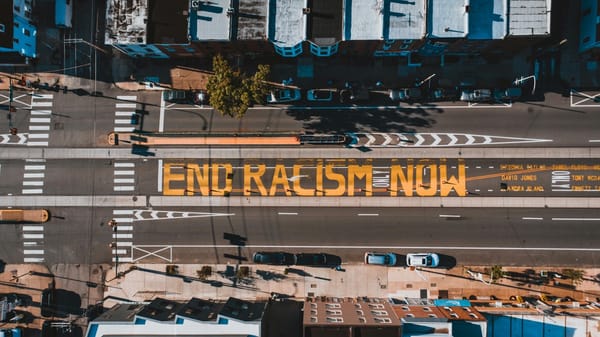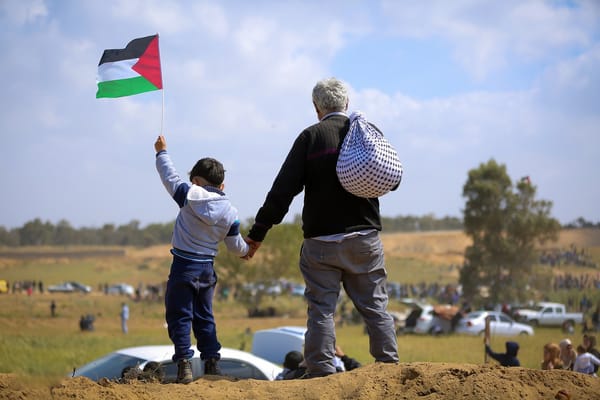Islamophobia Is Much More Than Just a ‘Phobia’
It’s not fear that leads people to actively incite hate and prejudice targeting Muslim people, but deeply embedded racist beliefs and attitudes.

Access the Audio Read version of this article directly on Spotify for Podcasters.
The most common reaction I tend to get when talking about Islamophobia with people is: ‘it’s not really racism though, is it?’
Even after everything Muslim people have been through in the last couple of decades, from overt discrimination and harmful stereotypes to physical and terrorist attacks, Islamophobia still is a widely misunderstood form of prejudice and racism. And this misunderstood belief that Islamophobia is somehow a lesser force than other forms of racism - or even that it isn’t real - may come from the term itself.
It was only recently, in 2017, that Islamophobia was given anofficial definition by an all-party parliamentary group, defining it as ‘rooted in racism’ and a ‘type of racism that targets expressions of Muslimness or perceived Muslimness’. But before being ‘officially’ defined by the state (which comes with its own set of issues), Islamophobia was vaguely taken as negative views and attitudes towards Islam and/or Muslims. Negativity that was apparently rooted in people’s fear and apprehension of a religion. But it’s way, way more than a ‘phobia’.
The term ‘Islamophobia’ feeds into the belief that it’s a concept based on individual fear and prejudice, reducing entirely the very real consequences and effects Islamophobia has on Muslim people. Viewing Islamophobia as this ‘phobia’, as if it was similar to having a fear of spiders or heights, completely minimises the experiences of Muslim people. Islamophobia also implies that because it’s a fear, people have no control over it. That it’s not their fault that they have this phobia, therefore they can’t possibly be in the wrong if they are fearful. But what does this tell the Muslim community? It tells a hijabi-wearing Muslim woman who has been hurled abuse on her commute that her experiences don’t really matter. It shows a Muslim family who has once again been ‘randomly’ chosen for security checks at the airport that it happened out of fear, and that it is normal and to be expected.
Islamophobia, despite its name, isn’t a phobia. It isn’t a ‘fear’ of Islam or Muslim people. Too much emphasis has been placed on the individual, which makes us forget that Islamophobia is both a form of racism and a governing tool for the state. It is a structural form of racism and violence, and it goes to the very top. It’s hard to forget Boris Johnson, our very own Prime Minister, comparing women in niqabs to ‘letterboxes’. A comment that subsequently led to a 375% increase in Islamophobia incidents the week after Johnson made the comment. And yet this man is still employed, and somehow leads a country, while the Muslim community still fears for their lives.
It’s not fear that leads people to actively incite hate and prejudice targeting Muslim people, but deeply embedded racist beliefs and attitudes. Beliefs that are both justified and encouraged by the people in power.
Let’s be real: the government and its institutions want us to see Islamophobia as this individual fear because it makes their governance, surveillance, and censorship of Muslim people a lot easier. They can control the narrative by arguing that state surveillance and violence against Muslim people is to ‘protect’ the public from harm. This massively reduces any public scrutiny or criticism into what the government is doing as they, and the media, have successfully linked Islam with terrorism and mass violence. They’ve stirred up enough fear and worry around the Muslim community, that they can basically do whatever they want now without too many questions being asked by the general public. This is exactly how the government has managed to bring in oppressive tools like the Prevent programme, which has been consistently found to disproportionately target Muslim people, even children. Yes, even 4-year-old children.
The term ‘Islamophobia’ also tends to make a lot of people switch off and disengage from vital conversations around it, as they perceive it as something that simply doesn’t apply to them. Viewing Islamophobia as fear-induced can lead to disengagement, and people not investing their time and energy in it. Maybe it’s actually just hate. Either way, just like other false narratives, this isn’t fair on the people it targets. Islamophobia isn’t just the attitudes of the few, but a deeply embedded structural force in our society. And this means we all have to engage and work together to tackle it.
While the word can be useful to describe the hatred and prejudice Muslim people see and experience on a regular basis, calling it ‘Islamophobia’ can also hinder the conversation. Especially when the conversation is based on viewing Islamophobia through the lens of individual fear, rather than a state-sanctioned form of structural racism. It’s neither a fear nor a phobia, it’s a term that needs to be unpicked for it to be properly understood. And the sooner we can analyse and scrutinise the many facets of Islamophobia beyond this ‘fear’, the sooner we can work towards eradicating it.





